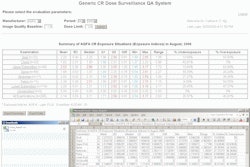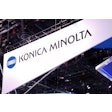Besides its noted clinical benefits, PACS is often appreciated for its financial value, including direct cost savings and the potential to realize additional revenue and profit from increased efficiencies. But a monetary return on PACS investment may prove elusive for institutions with low imaging exam volume and an efficient film-based environment, according to the experience of the Western Health Authority in the Canadian province of Newfoundland and Labrador.
Following the implementation of PACS at its two acute care hospitals and six health centers, the Western Health Authority calculated that PACS will tack on $2.65 (Canadian) to the average cost of an imaging study over its first six years of operation. As a result, other benefits, such as enhanced patient care, need to be weighed when evaluating the technology, according to a research team led by Don MacDonald of the Newfoundland and Labrador Centre for Health Information (Journal of Digital Imaging, August 26, 2009).
"PACS was very costly to implement and to maintain in the Western Health Authority, making it difficult to justify PACS based solely on a financial costing model," the authors wrote.
In November 2007, Newfoundland and Labrador completed the implementation of a province-wide PACS, culminating a 2005 initiative launched by Canada Health Infoway and the provincial government. As part of a larger evaluation of the impact of PACS on the province, researchers performed a cost-benefit analysis in the Western Health Authority, which serves approximately 80,000 people (16% of the total provincial population).
The researchers included CT, echocardiography, MRI, nuclear medicine, general radiography, and ultrasound in their cost analysis; annual costs per radiology exam were calculated for 12 months before and 12 months after PACS implementation.
Total PACS implementation costs were calculated at $3.9 million, including $2.4 million in PACS hardware costs (core PACS hardware; DICOM print server and integration fees; diagnostic, clinical, and quality control workstation hardware; DICOM gateways; RIS/PACS brokers; and computed radiography/digital radiography systems).
PACS software generated $932,000 in costs, including core PACS software, workstation software and licensing fees, and Web servers, software licenses, and integration fees. Human resources costs for the PACS vendor tacked on $401,000, and data storage costs reached $200,000.
In addition to the total implementation costs of $3.9 million, annual PACS maintenance costs were pegged at $229,000.
Networking costs were not included in the cost of PACS, as the Western Health Authority's provincial network infrastructure is utilized for all electronic health record traffic. PACS' share of annual networking costs was estimated at $43,200, however. For the purposes of the cost analysis, hardware depreciation expenses were included in the cost-per-exam.
Total film costs were calculated at $649,000 in the 2004/2005 fiscal year, including $209,000 of human resources costs and $440,000 in supplies.
Operational PACS costs in 2007/2008 were estimated to be $635,000, including $566,000 in equipment service costs and $69,000 in human resources costs. PACS implementation costs reached $2.4 million over the four-year period from 2004/2005 to 2007/2008, including $571,000 in 2007/2008.
In the pre-PACS period of 2004/2005, the 87,500 imaging exams were produced in Western Health Authority at a total cost of $825,000. In 2007/2008 (100% filmless), the estimated 94,500 imaging studies were generated at a total cost of $1.25 million.
| Average Western Health Authority cost per imaging exam (all figures Canadian $)
|
Prior studies have concluded that sites with high exam volumes, inefficient film environments, and opportunities to generate revenues have the best chance of realizing a financial return on their PACS investment. The Western Health Authority, however, was characterized by a moderate exam volume, an efficiently run film environment, and no opportunities for generating revenue due to the nature of the Canadian healthcare system, according to the authors.
In Canada, universal healthcare insurance is furnished through the Canada Health Transfer, and legislation such as the Canada Health Act specifies standards that provinces must maintain to receive funding, according to the researchers.
"Therefore, PACS provides limited opportunity for hospitals in Canada to generate revenues by increasing the number of patients seeking radiology services," the authors wrote.
The Western Health Authority analysis concluded that unless there's a long planning horizon, PACS is more expensive to operate than a traditional film-based imaging environment.
"The primary reasons for not achieving a return on investment for PACS in many sites under study was a combination of low exam volume, a pre-existing efficient film environment, and the high costs for PACS hardware, software, and ongoing maintenance," according to the authors.
By Erik L. Ridley
AuntMinnie.com staff writer
September 15, 2009
Related Reading
Harvesting PACS audit data yields operational gains, August 24, 2009
Does PACS software cause DR data loss? July 15, 2009
Multitouch imaging displays, Wii remote show promise in PACS, July 8, 2009
Handheld devices show promise for patient education, June 8, 2009
Treadmill-based workstation gets radiologists moving, June 6, 2009
Copyright © 2009 AuntMinnie.com




















